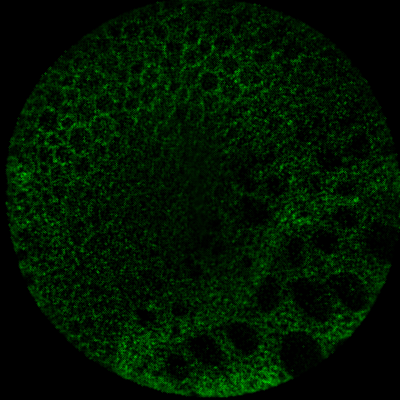Address
10 place de la Joliette
Atrium 10.4 – Etage 6
13002 Marseille, France
Sensitive optics, such as microscope objectives and our endoscope objectives, need to be maintained with special care. First, you should remove any dust particles using compressed air. If the surface is stained or greasy, add several drops of lens cleaning solution or reagent-grade isopropanol on a lens cleaning tissue and gently sweep the optics surface without pressing on. Repeat the operation until the surface is clean.
Fiber connectors can be easily cleaned with a specialized fiber connector cleaner. If you don’t have one, you can use an optics tissue damped with a few drops of fiber optics cleaning solvent, or alternatively with isopropanol. Repeat this step if necessary. You can check the connector surface with a specialized inspection tool, or an optical microscope. If the connector is severely damaged, scratched or burnt, it could be softly repolished, However only consider this solution if you are familiar with fiber polishing. You can also contact us for information or help regarding this step.
BondXplorer™ microscope
We can perform a live demonstration of the system at our head office in Marseille. If you cannot come, we can also perform a remote demonstration with screen sharing and room camera. Contact us for more information.
The SRS microscope is designed to be operated by a user without any specific background. It is easy to use and robust enough so that you do not have to modify anything sensitive. If needed, we offer a training session for users to get used to the imaging protocol.
The objective, as well as most optical filters inside the microscope, can be changed easily. The design is thus modular and can vary according to your needs. We are also open to discuss special features that you might require, don’t hesitate to contact our team.
InSplorer™ endoscope
The temperature range in which the InSplorer™ endoscope functions properly is between 10°C and 50°C. Be careful to keep it at all time between 0°C and 60°C. Out of this range, some internal components may start to degrade, causing irreversible damage.
The flexible part of the endoscope can be moved freely and bent up to a radius of a few centimeters, under which damage can be caused to the fiber inside. Besides, for a bent radius below 10 cm, additional losses will be induced, following this table :
| Radius (cm) | Bending loss (dB) |
|---|---|
| 4 | 0.47 |
| 5 | 0.36 |
| 5.5 | 0.27 |
| 6.5 | 0.15 |
| 9 | 0.05 |
| 10.5 | 0.02 |
However, the endoscope head, metallic tube and plastic sleeve, is not flexible and should not be bent !
There are currently two different objectives that can be set on the InSplorer™ endoscope head. Both can be screwed and unscrewed, making them exchangeable, though we highly recommend contacting us before changing the objective. Here are the specifications for the available objectives :
| GRIN objective | Micro-lenses objective | |
|---|---|---|
| PSF (λ=920 nm) | 0.9 µm | 1.55 µm |
| Collection NA (λ=500 nm) | 0.7 | 0.45 |
| WD (in air) | 230 µm | 600 µm |
| Max. FoV | 200 µm | 600 µm |
The endoscope head is designed to be waterproof, and can hence be immersed while imaging, even for several hours imaging sessions. However, we recommend not leaving the endoscope underwater when it is not necessary. Carefully dry and clean the endoscope head and objective after such experiment. Here is an example of underwater live imaging using the InSplorer™ endoscope (2 photon imaging of oak stem).


